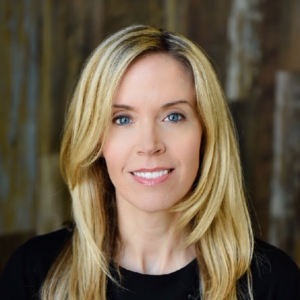Predictions are tricky. It is hard to look at the next 12 months and make assumptions about trends when the future seems uncertain. But, through our research and interviews, we see some obvious priorities and shifts in the market just three weeks into the new year. Earlier this week, someone asked me if the investment in HR Tech will continue at the same pace as in 2021 and 2022. My answer is yes. The pandemic and the past three years have changed how companies view automation and technology. And, as companies prepare for any talent transformation, technology is a critical part of that journey. We found that 70% of companies will continue to invest the same or increase their investment even with an economic slowdown.
But, even if investment remains high, it will look different. The band-aid approach to technology which characterized the past few years, will be replaced by more strategic investments in providers (partners) that can deliver value and provide the capabilities and services to support transformation.
Here are a few of my thoughts on trends that will dominate 2023:
Skills will continue to be the most significant trend: Skills have the greatest impact on the future of work and employee experience. Skills are THE trend to watch in HR Technology this year, and companies are looking closely at providers in this space. We just published a study with HCI and found that 82% of companies identified skills as a priority, and 54% of companies are increasing their investment in skills this year. The number one driver is to provide more career development opportunities for talent. A skills-based approach to talent enables companies to offer a fairer hiring process, support strategic workforce planning, and make smarter decisions to enrich reskilling and upskilling talent. Skills impact and transform every single aspect of talent acquisition and management and allow employees to be understood in a more meaningful way. The challenge most companies face is that they take a piecemeal approach to skills- separating the strategy, change management, and technology. This approach delays the impact of a skills-based approach and creates frustration. Over the next year, providers must work with companies to provide a more holistic approach to skills.
Talent Intelligence needs a reckoning: Talent intelligence is the new buzzword in HR Tech, but it is also one of the most misunderstood areas. Talent intelligence platforms are AI-driven platforms that help companies understand the potential and learnability of the workforce. They use large data sets and a skills-based approach to look at talent in a complete way. The challenge is that too many providers are using talent intelligence. Sourcing providers, online reference checking providers, and people analytics providers are all rebranding themselves as talent intelligence. The misuse of this category creates confusion with buyers and minimizes the impact of what these platforms can actually do for companies.
Strategic workforce planning will be a priority: It is not a new category, but it has gained momentum over the past year. As companies enter a period of transformation, understanding the supply and demand for talent is critical. But, only 1 in 2 companies use their workforce planning strategy company-wide. Workforce planning only works when companies have the resources and technology to support it. Even when investing in a core system, workforce planning is still manual, and companies rely on excel. The first generation of workforce planning providers (Aruspex, Vemo, Inforhm) provided advanced capabilities that, unfortunately, did not go mainstream. The good news is that we see existing skills-based platforms and new providers focusing on this area. Our following Aptitude Research report will focus on strategic workforce planning- coming soon…
Contingent workforce management needs to be a priority (but will take time): Some research firms estimate that by 2030, 50% of an average organization’s workforce will be comprised of contingent workers. Unfortunately, most HR leaders and TA leaders are hesitant to take ownership of contingent workforce management. A contingent workforce helps companies fill critical talent gaps, reduce costs and increase overall productivity. In a year when agility and resilience are becoming table stakes for businesses, alternative work arrangements are critical to the future of the workplace. Yet, despite the increased investment in contingent labor, companies still need to overcome many of the same challenges. Most companies need more visibility into this critical workforce segment’s use, spending, and performance. Additionally, cost control and fee models are a concern as companies question their staffing agencies and technology partners’ need more expertise in-house. Contingent workforce management is ripe for transformation. Any strategy around DEI, skills, or workforce planning needs to include contingent workers. Companies must examine what is broken to develop deeper insights and a more effective framework. They must reconsider the ownership, fee models, and partnerships that they have in place.
Alumni programs will be invigorated: We are already seeing a renewed focus on alum programs, which will likely continue this year. Alumni programs support recruitment and employee experience. For example, one organization we interviewed fills 10% of its roles with alums. We will likely see more focus on alums from existing ATS providers, CRM providers, and talent intelligence/skills-based platforms.
Pay transparency will be a focus: 1 in 5 workers will now work in a jurisdiction with pay transparency requirements. But, there is a growing tension between job seekers that want pay transparency and employers that do not. It is impacting remote recruiting and how job descriptions are being created and the ridiculous pay ranges included. Vendors are starting to think about balancing the needs of the candidate and employer. My friend and labor economist, Andrew Flowers, often publishes on the topic, and I recommend following his work at Appcast.
Conversational AI will replace ATS in the high-volume: High-volume industries do not need a traditional ATS. It doesn’t support hourly candidates or busy managers. Companies in these industries are looking at the opportunity of conversational AI to replace the ATS and seeing significant outcomes. McDonald’s is one example of a company that reduced time to fill to 2 days using conversational AI through Paradox. I expect more companies to look at this option over the next year.
2023 will no doubt be full of surprises, but I look forward to the innovation, transformation, and partnerships from the providers in this space. One trend worth following is ChatGPT and its use in talent acquisition. I attended a panel on Recruiting Brainfood today, and some use cases include communication, job descriptions, introductions, and recruiter productivity. I don’t see this replacing assessment, as some have suggested, but it presents exciting options for recruiters and candidates looking for more immediate research.
Author
-

Madeline Laurano is the founder and chief analyst of Aptitude Research. For over 18 years, Madeline’s primary focus has been on the HCM market, specializing in talent acquisition and employee experience. Her work helps companies both validate and re-evaluate their strategies and understand the role technology can play in driving business outcomes. She has watched HCM transform from a back-office function to a strategic company initiative with a focus on partnerships, experience and efficiency. Before founding Aptitude Research, Madeline held research roles at Aberdeen, Bersin by Deloitte, ERE Media and Brandon Hall Group. She is the co-author of Best Practices in Leading a Global Workforce and is often quoted in leading business publications including The Wall Street Journal, The Boston Globe, Yahoo News, The New York Times and The Financial Times. She is a frequent presenter at industry conferences including the HR Technology Conference and Exposition, SHRM, IHRIM, HCI’s Strategic Talent Acquisition Conference, Unleash, GDS International’s HCM Summit, and HRO Today. In her spare time, she is a runner, an avid sports fan and juggles a house full of boys (where a spontaneous indoor hockey game is not unheard of!).
